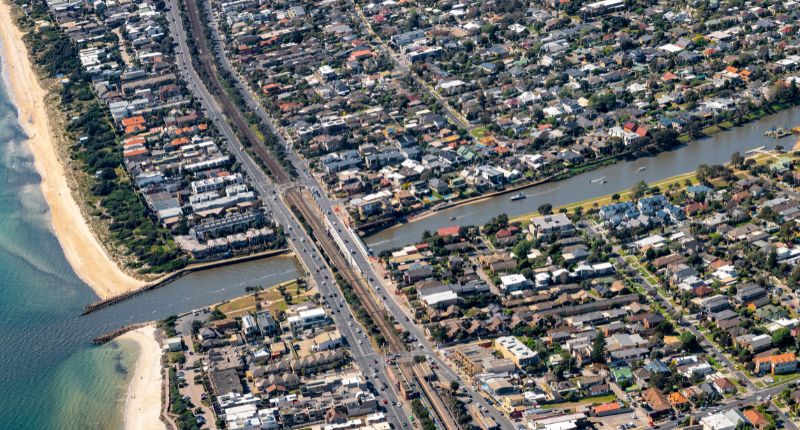- National home values rose 2.9% in the three months to July.
- Home values are down -3.4%, annually.
- Rent values grew by 0.6% in July.
Australia’s property prices rose again in the three months to July (2.9%). This is the highest quarterly movement since January 2022, despite monthly growth slowing to 0.7% from 1.1% in June, according to CoreLogic’s August Monthly Housing Chart Pack.
Over the past 12 months, home values were -3.4% lower, annually. This is an improvement from when home values were 8% lower in the year to March.
Australia’s residential real estate market is now worth $9.9 trillion across 11 million dwellings.
Across the three months to July 2023, all Australian capital cities recorded price growth, with a significant variation between the smallest and largest levels of change. Most regional areas, besides the Northern Territory and Victoria, also recorded growth over the three months to July.
Property price growth has started to slow, with the first signs seen in the aforementioned drop from June. Auction clearance rates have also fallen. CoreLogic’s head of Australian research, Eliza Owen, said the main driver is likely the interest rate hikes.
“I get the impression that a lot of people thought the RBA was done with rate hikes in May at 3.85%, so the June decision surprised households, and now they remain wary of further rate hikes.”
Ray White‘s head of research, Vanessa Rader, however, read the market differently.
“The lack of housing and continued lower-than-usual listings will keep competition in the marketplace which will cause upward momentum in values,” said Rader.
“The impacts of interest rate increases haven’t stifled dwelling price growth as many anticipated, so as finance remains available and demand for housing continues (affected by population growth) rises are expected.”
WA and SA record growth while others faltered
Both the state capitals and regional areas for Western Australia and South Australia recorded growth across the twelve months to July 2023. The growth has led to dwelling values in both Perth and Adelaide reaching a record high.
The growth experienced in WA and SA was attributed to their more affordable housing markets.
“Lower asset values are less sensitive to market shocks and tend to have slower, steadier cycles over time. On top of that, these states have been buoyed by positive internal migration trends,” said Owen.
She added that WA has also been experiencing a growth in income, population and housing, brought on by an upswing in mining activity.
Rental relief as price growth slows
Rent values grew 0.6% in July, and the national annual increase was 9.4%. While growth was recorded, the pace of growth shows signs of easing. Growth in rents declined from a 10.2% high over the 2022 calendar year.
National annual change in rental rates

Rents are unlikely to return to pre-pandemic levels, and the low levels of growth seen through the 2010s are less likely for the coming decade, according to Owen.
“The rate of growth will keep moving lower because growth in rents tends to move with interest rates over time.”
Eliza Owen, CoreLogic’s head of Australian research
“We’re already seeing more investors come back into the market through housing finance data, so that will gradually add to rental supply. In the meantime, we’ve observed group households reforming in regional Australia which have helped to reduce annual growth in regional rents to 4.5%, from a peak of over 12% in 2021.
“Growth in national rents will continue to slow down, but it’s off the back of very high adjustments in rent values.”












